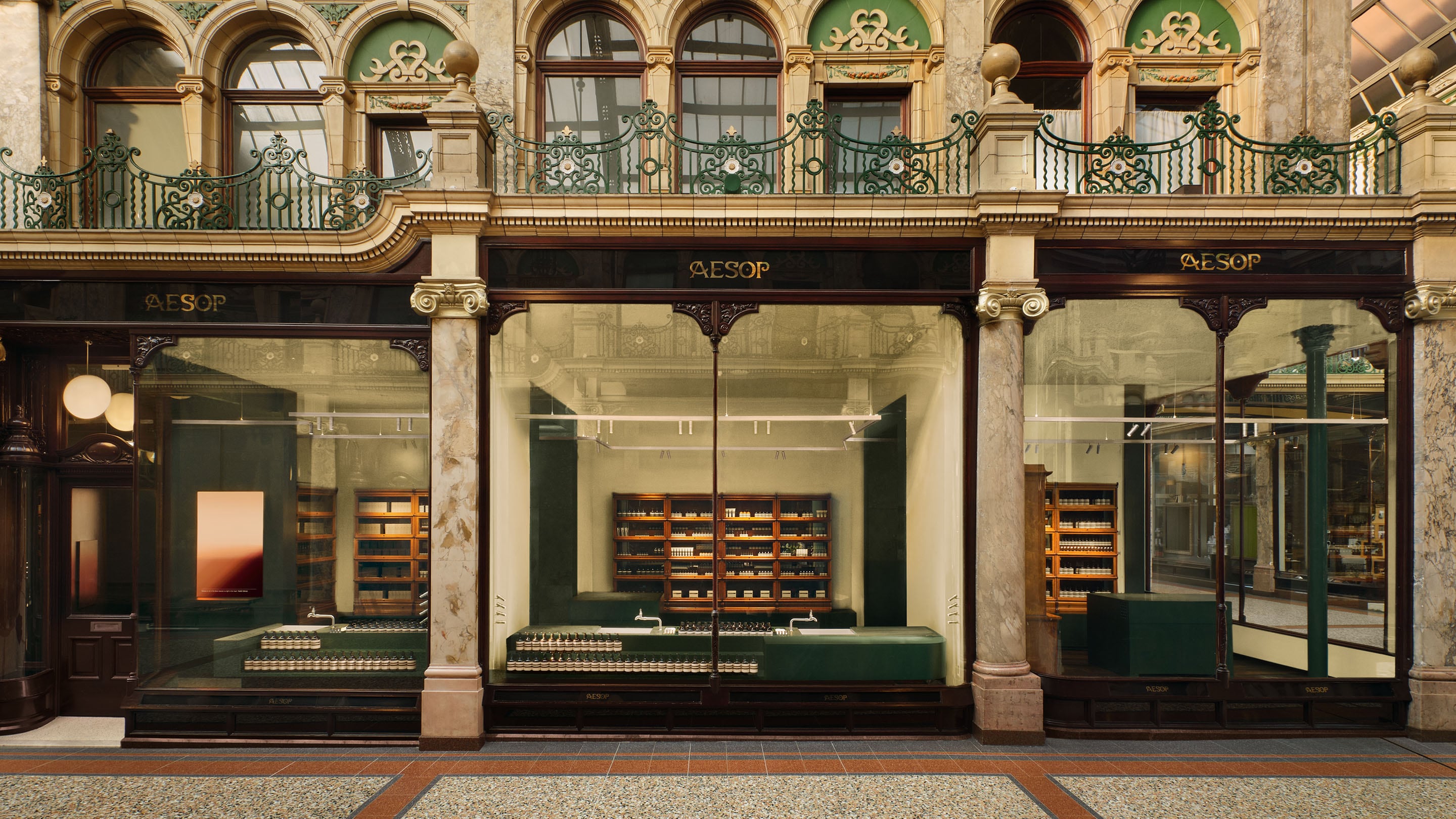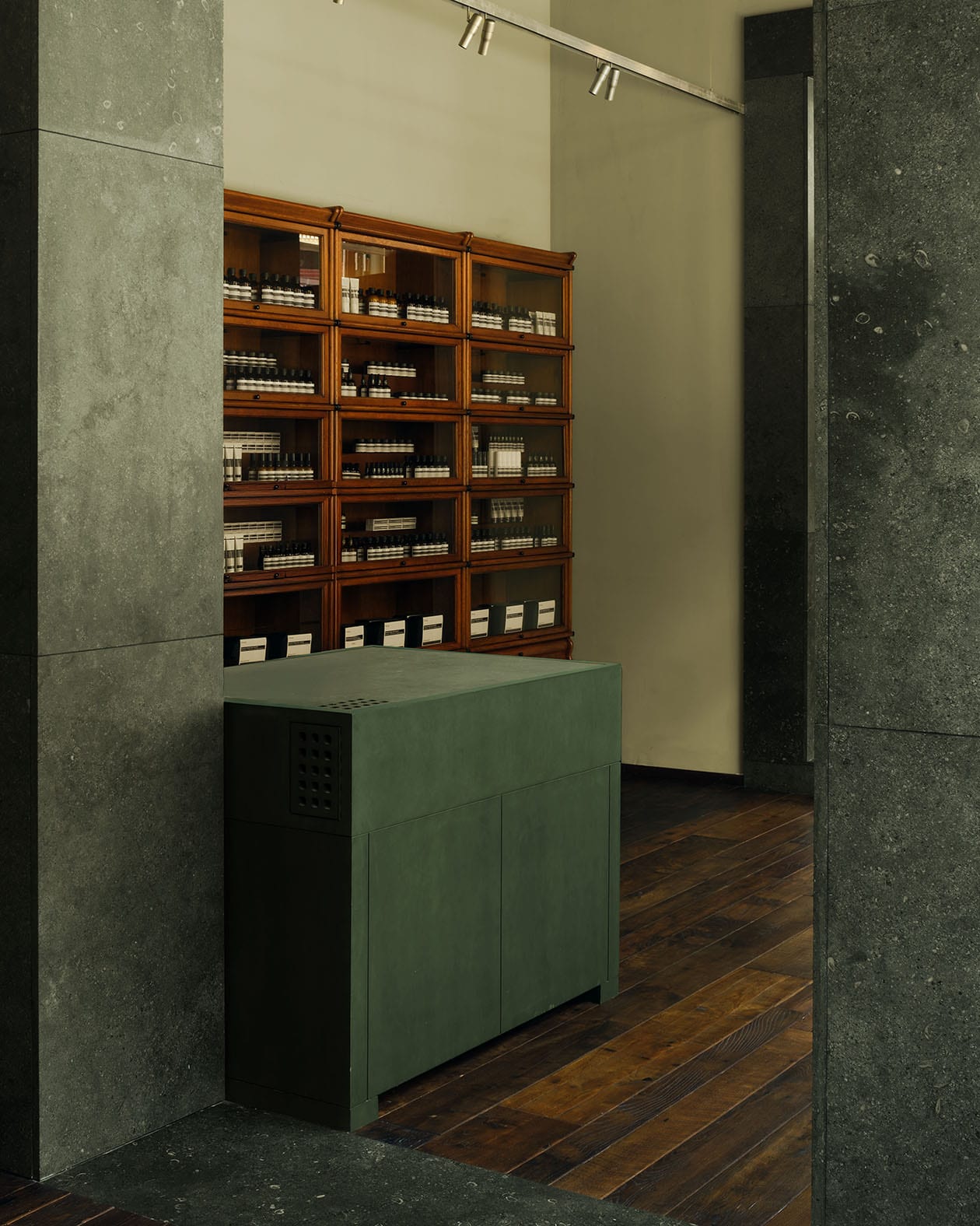Many English homes have tiny bathrooms—glorified cupboards, really. During the late Victorian era, however, when innovations in plumbing brought running hot water to wealthy homes, some bathrooms were closer to parlours. The previously portable bath—usually used in the kitchen or dressing room—became a piece of plumbed-in furniture, often encased by wooden panelling, surrounded by soft furnishings and timber floors. In this way, bathing transformed into an activity of leisure rather than of perfunctory hygiene, but only for a brief period. By the turn of the twentieth century, British bathrooms were increasingly tiled and small, with a distinct purpose: they became spaces to rush through.
Our inaugural Leeds store, situated in the turn-of-the-century County Arcade, reinstates the exalted interpretation of a bathroom as a place to unwind, to converse, to cleanse. The sequence of three rooms, interconnected by an enfilade, integrates the art of bathing into all aspects of life in the store. Rather than relegating washbasins to a single space, a continuous line of timber-panelled cabinets with enamelled troughs stretches along the windows throughout the store, extending the possibility of performing one’s ablutions wherever and whenever the fancy strikes. As people walk past outside, they might see someone washing their face or hands on the other side of the glass—an unexpected transcendence from the private to the public realm.


